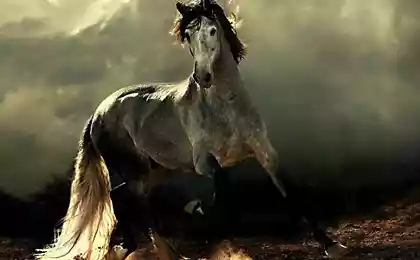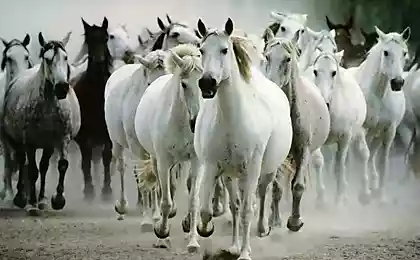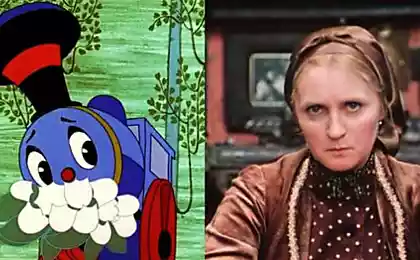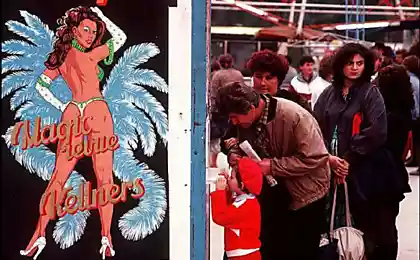1746
2014 - Year of the Horse
The coming 2014 on the eastern calendar - Year of the Horse. No matter how far away China, with its calendar, the horse in different variations was the most striking symbol of Russia. Suffice it to recall the "troika", a horseshoe over the door, skate on rooftops, centaur Polkan - known Kargopolskaya toy as the importance of this character becomes apparent. Let's see, what's the deal here?
The answer to this question turns out to be buried in the ground. And he was buried more than 5,000 years ago in the mounds, burial grounds south of modern Russia. Here we find the first chariot, even clumsy, but strong wagon, drawn by two horses. These mounds belong to tribal leaders that future historians will call the Indo-Europeans. They saddled the first horse to have invented the wheel and harnessed the horse in the first carriage.

For two thousand years, these tribes settled all over Eurasia. Standing on their carts with bows and arrows, they conquered the peoples living in this vast space. On these carts they brought their wives and children, their people and their culture. Already the II millennium BC number of chariots decides the outcome of battles like the European Celts and the Egyptians. She moved the kings of the Greeks, Babylonians and the Indians. Chariot becomes a bed on which the man goes to his last journey.

But not only transport and powerful weapons brought with them Indo-Europeans. They brought their language, their culture and their religion, in which the horse played an important role. The fact that the Indo-Europeans worshiped God, whose manifestation seen in the sun. Heavenly horses entail a fiery chariot wheels which are the sun. God sits on a cart, armed with bows and arrows (sunlight), where it will get the boom - there arises life.
Over time, forgotten god or gods of these was a lot, but the sun-carriage and horses, as the image of the good life force, entailing that the wagon across the sky remained forever.
Echoes of these beliefs continued to nurture and Slavic cults. First of all, it is a way of horses, ducks, driven boat-wagon Sun on the celestial sea. Afternoon sun floats over the world of the living and night swims over the world of the dead, giving light to him. Horses on the roofs of any Russian hut remind us all about the same tradition.


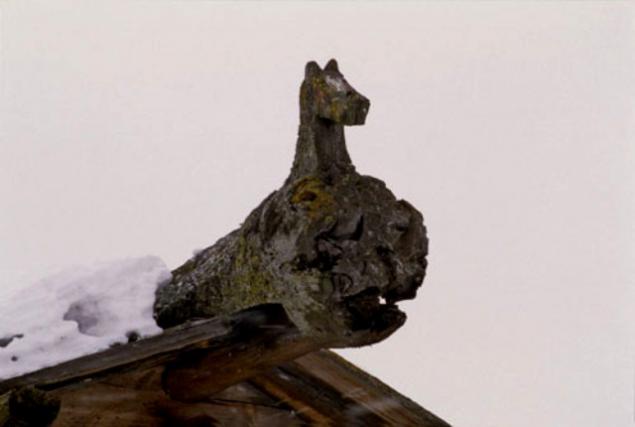

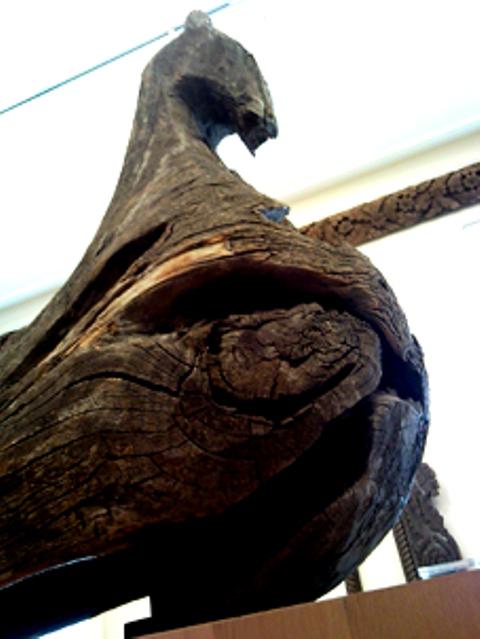

Skates on the roofs of the huts Russian put to this day as a sign of the sun, calling the harvest, and hence the prosperity of the house. And in the old days when building a house foundation laid horse, when transferring the same house his skull were getting out of the ground and buried beneath the foundations of the new location. City wall set in the same way.
Even in the Christian tradition to save the image with another pre-Christian origin. For example, Elijah the prophet, ascended to heaven in a chariot of fire, shows us all the same old way. For horse were installed special patron saints and "horse" holidays. Patrons of the horses were considered binding. Nicholas, Sts. Florus and Laurus, St. George the Victorious. Special "horse" festival is celebrated on the feast day of St. Florus and Laurus and vernal St. George's Day.

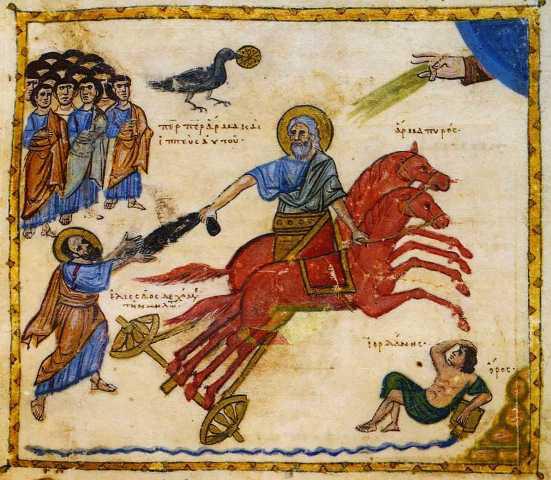

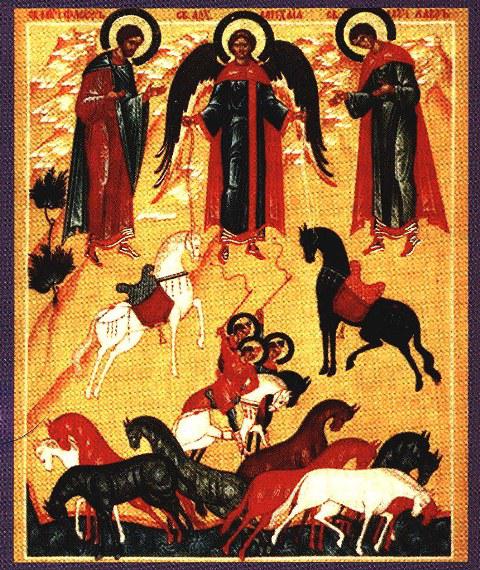
No wonder our ancestors tried so hard to fill our lives with positive symbols, amulets, used it a horse. The horse on the roof, a horseshoe over the door, towels with horses and the world tree above the windows. It seems that the whole house is filled with ancient power of the positive.

Bore the brunt of this force and horseshoe. But whence came to our custom to hang it on the door? In the last century in Russia wealthy aristocrats could afford to shoe horses, gold and silver horseshoes, as once did the ancient Egyptian pharaohs it. Yes, in fact, a simple iron was expensive and rare. Locate the metal horseshoe on the road, it could sell at a profit Kuznetsk maker or dealer.
Hence the belief: "Find the road horseshoe and take her home - fortunately».
In the world of nuclear weapons and nanotechnology horses and chariots drawn by them have lost their military significance, their religious symbolism and forgotten, but never forget this beautiful image of the good life force associated with a horse for the ages.

The answer to this question turns out to be buried in the ground. And he was buried more than 5,000 years ago in the mounds, burial grounds south of modern Russia. Here we find the first chariot, even clumsy, but strong wagon, drawn by two horses. These mounds belong to tribal leaders that future historians will call the Indo-Europeans. They saddled the first horse to have invented the wheel and harnessed the horse in the first carriage.

For two thousand years, these tribes settled all over Eurasia. Standing on their carts with bows and arrows, they conquered the peoples living in this vast space. On these carts they brought their wives and children, their people and their culture. Already the II millennium BC number of chariots decides the outcome of battles like the European Celts and the Egyptians. She moved the kings of the Greeks, Babylonians and the Indians. Chariot becomes a bed on which the man goes to his last journey.

But not only transport and powerful weapons brought with them Indo-Europeans. They brought their language, their culture and their religion, in which the horse played an important role. The fact that the Indo-Europeans worshiped God, whose manifestation seen in the sun. Heavenly horses entail a fiery chariot wheels which are the sun. God sits on a cart, armed with bows and arrows (sunlight), where it will get the boom - there arises life.
Over time, forgotten god or gods of these was a lot, but the sun-carriage and horses, as the image of the good life force, entailing that the wagon across the sky remained forever.
Echoes of these beliefs continued to nurture and Slavic cults. First of all, it is a way of horses, ducks, driven boat-wagon Sun on the celestial sea. Afternoon sun floats over the world of the living and night swims over the world of the dead, giving light to him. Horses on the roofs of any Russian hut remind us all about the same tradition.






Skates on the roofs of the huts Russian put to this day as a sign of the sun, calling the harvest, and hence the prosperity of the house. And in the old days when building a house foundation laid horse, when transferring the same house his skull were getting out of the ground and buried beneath the foundations of the new location. City wall set in the same way.
Even in the Christian tradition to save the image with another pre-Christian origin. For example, Elijah the prophet, ascended to heaven in a chariot of fire, shows us all the same old way. For horse were installed special patron saints and "horse" holidays. Patrons of the horses were considered binding. Nicholas, Sts. Florus and Laurus, St. George the Victorious. Special "horse" festival is celebrated on the feast day of St. Florus and Laurus and vernal St. George's Day.




No wonder our ancestors tried so hard to fill our lives with positive symbols, amulets, used it a horse. The horse on the roof, a horseshoe over the door, towels with horses and the world tree above the windows. It seems that the whole house is filled with ancient power of the positive.

Bore the brunt of this force and horseshoe. But whence came to our custom to hang it on the door? In the last century in Russia wealthy aristocrats could afford to shoe horses, gold and silver horseshoes, as once did the ancient Egyptian pharaohs it. Yes, in fact, a simple iron was expensive and rare. Locate the metal horseshoe on the road, it could sell at a profit Kuznetsk maker or dealer.
Hence the belief: "Find the road horseshoe and take her home - fortunately».
In the world of nuclear weapons and nanotechnology horses and chariots drawn by them have lost their military significance, their religious symbolism and forgotten, but never forget this beautiful image of the good life force associated with a horse for the ages.

